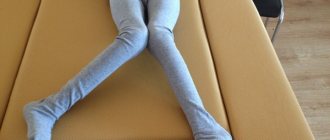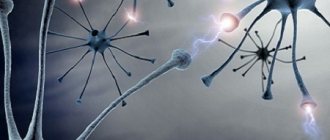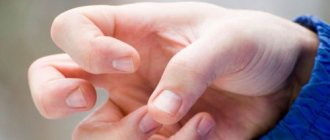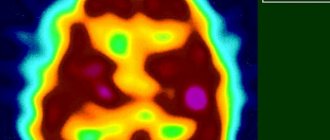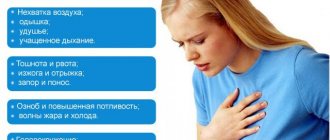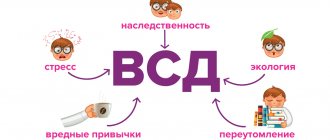Torsion dystonia Wikipedia
TORSION DYSTONIA (Latin torsio, torsionis rotation, twisting; Greek dystonos tension; synonym: torsion spasm, deforming muscle dystonia, progressive torsion spasm, dysbasia lordotica progressiva) is a chronic progressive disease of the brain, which is based on damage to the extrapyramidal system.
Its characteristic feature is the changing, uneven distribution of muscle tone in individual parts of the body, accompanied by peculiar hyperkinesis (see), often with rotational movements, 3 a b left -ness is rare. Men get sick more often.
For the first time, a wedge, a picture of etc., was described in 1907 by M. W. Schwalbe. He observed a family for many years, in two generations there were 5 patients who, in his opinion, suffered from hysterical neurosis, but in reality - torsion dystonia. In 1911 G.
Oppenheim established that Etc. is an organ of the disease associated with a disease of the brain caused by damage to the subcortical nodes, and proved that attributing it to hysteria is erroneous. Question about nosological affiliation, etc.
remained controversial for a long time. According to some scientists, T. d. is an independent hereditary disease. Other researchers not only did not attach importance to heredity in the etiology of etc.
, but also believed that there are only torsion-dystonic syndromes with pathology of the extrapyramidal system of various etiologies - infectious and toxic encephalitis, traumatic brain injury, birth trauma, vascular diseases of the brain, etc.
It is now generally accepted that T. is an independent nosological form, in the etiology of which the hereditary factor is of primary importance. The type of inheritance is different. In some families, the disease is inherited in an autosomal dominant manner, in others, which is more common, in an autosomal recessive manner. Etc.
, inherited according to the first type, was traced for 2-3 generations, and in some families for 4-5 generations. With autosomal recessive inheritance, cases of consanguinity between parents have been reported. Sporadic cases of Etc. are often encountered.
Pathogenesis has not been established. No primary metabolic defect was identified. It is assumed that disturbances in the content of catecholamines (see), mainly dopamine, are important in the pathogenesis. Pathophysiological essence of Etc.
is a violation of the subcortical regulation of muscle tone (see). A postmortem examination reveals mild degenerative changes in the cerebral cortex and more pronounced ones in the basal ganglia, red nucleus, Lewis body (nucleus subthalamicus), substantia nigra, and dentate nucleus of the cerebellum.
Clinical picture. As a rule, the first signs of T. appear at the age of 5-20 years. The course of the disease is usually slowly progressive, sometimes stationary. Etc., inherited in an autosomal recessive manner, often begins earlier and is more severe than in patients with an autosomal dominant type of inheritance.
The first signs of the disease are involuntary movements in one, usually the lower, limb. In this case, patients experience a feeling of awkwardness in their gait. Hyperkinesis gradually spreads, they arise and intensify when trying to change the position of the body, make any movement, when standing, walking, or emotional arousal.
Depending on the location of hyperkinesis, local and generalized forms of torsion dystonia are distinguished.
178 TORSION DYSTONIA
In the local form, hyperkinesis of the muscles of the limbs and neck develops. In the limbs (in each individual) various, sometimes fanciful, involuntary movements may occur - chorea-tic, athetoid, hemiballic, tic-like, myoclonic, tonic spasms and tremors.
Characteristic rotational movements are noted along the longitudinal axis of the limb. In the proximal parts of the extremities, hyperkinesis is more pronounced than in the distal parts. In some cases, hyperkinesis of the muscles of the right hand can manifest itself as a wedge, a picture of writer's cramp syndrome (see).
At the same time, at the beginning of the disease, spasms often occur only when writing. Subsequently, spasms gradually spread to other muscles of the hand that are not involved in the act of writing (see Spasm). Hyperkinesis of the neck muscles causes sharp turns of the head back, forward, and to the sides.
At the onset of the disease, tonic spasms of the cervical muscles may resemble spasmodic torticollis syndrome (see). Subsequently, other involuntary movements appear that are not characteristic of spastic torticollis.
The local form is much more common than the generalized one; its transition to the generalized form occurs gradually at different times from the onset of the disease and is expressed by the appearance of hyperkinesis of the trunk muscles.
Gradually they become more common and pronounced. Due to hyperkinesis of the long back muscles, the configuration of the spine changes - its curvature appears, hyperextension in the lumbar and lower thoracic regions with a sharp lordosis (see.
) and kyphoscoliosis (see Kyphosis, Scoliosis). At times, corkscrew-like movements of the body occur. I intensify hyperkinesis of the muscles of the limbs, neck, and sometimes spasms of the facial muscles appear. Speech disturbances may occur. During pauses between hyperkinesis, muscle tone can be increased, decreased, and sometimes normal.
The patient often freezes for a short time in abnormal positions. The gait becomes pretentious, swaying (“camel gait”). Self-care for patients is difficult, but they adapt to movement disorders, they manage to temporarily reduce or eliminate the resulting hyperkinesis and perform complex movements, nair, running, jumping, dancing.
In the patient's lying position, at rest and when attention is distracted, hyperkinesis stops or significantly decreases, and does not occur during sleep. The patients do not have paresis, coordination, sensory or pelvic disorders.
Tendon reflexes are preserved, pathological reflexes are not evoked. No intellectual-mnestic disorders are observed. In an unfavorable course in the later stages of the disease, joint deformities, muscle contractures of the trunk and extra-pyramidal rigidity of the muscles of the trunk, limbs, face, tongue, and pharynx may develop, which is accompanied by disorders of chewing, swallowing and breathing.
The diagnosis is established on the basis of the wedge, data. Usually it does not raise doubts if there are cases of the disease, etc., in the family. In sporadic cases, it is necessary to carry out differential diagnosis with torsion-dystonic syndromes, especially those caused by the chronic form of epidemic encephalitis (see.
Eco-como lethargic encephalitis) and hepato-cerebral dystrophy (see). Differential diagnostic significance for epidemic encephalitis is the acute development of the disease, sleep disturbance, diplopia (see.
), convergence insufficiency, gaze convulsions (see Gaze paralysis, convulsions), autonomic disorders and, in later stages, symptoms of parkinsonism. In contrast to T., with hepato-cerebral dystrophy, a Kayser-Fleischer ring is detected (deposition of a greenish-brown pigment containing copper on the periphery of the cornea of the eyes), a violation of copper metabolism with a low content of ceruloplasmin in the blood, and cirrhosis of the liver.
Other diseases of the extrapyramidal system, occurring with torsion-dystonic syndromes, differ from Etc. in that. that do not progress, undergo reverse development (to one degree or another) with a decrease in the frequency and severity of hyperkinesis.
Treatment is conservative and surgical. Prescribe cyclodol, artan, norakin, dynesin, tropacin, small doses of L-DOPA in combination with tranquilizers (elenium, seduxen, etc.), B vitamins; conduct courses of therapeutic exercises (see.
Choreatic hyperkinesis.
Choreatic hyperkinesis in diplegia is expressed in involuntary, non-rhythmic, fast, very varied and constantly repeated uncoordinated movements. Movements are observed in a wide variety of muscle areas. They are not limited to any muscle group, but appear in one or another part of the musculature. Moreover, each time some group of synergistically working muscles contracts and the external movements are similar to voluntary ones. Sometimes the main symptom of diplegia - muscle rigidity - may be almost absent. Severe choreatic movements sometimes interfere with speech and phonation and make walking and standing difficult. Choreatic hyperkinesis increases with excitement, decreases with rest and stops during sleep.
Choreatic hyperkinesis in hemiplegia occurs in the form of hemichorea (unilateral), which is often one of the symptoms of childhood cerebral hemiplegia.
Morphological changes in chorea are found mainly in small cells of the caudate nucleus. Hemichorea can also develop due to focal damage in the area of the optic thalamus, red nucleus, superior cerebellar peduncle and others. In a number of cases, choreas find morphological changes not only in the basal ganglia, but also in the cerebral cortex (S. N. Davidenkov, 1958).
Torsion dystonia generalized form (information, types of treatment, experience)
Generalized torsion dystonia is a disease that is characterized by disturbances in muscle tone and associated movement disorders.
The disease gets its name from the word torsion, which means “twisting.”
This is due to characteristic spasms of the trunk muscles, which lead to twisting of the body around its longitudinal axis. This type of spasm is also called torsion or rotational.
The term “generalized” means “general”, “encompassing the entire body.” The disease received this name because the spasm affects not just one muscle or part of the body, but the entire torso, both girdles of the limbs and the neck.
Forecast
The idiopathic form of the disease develops slowly. The outcome can be determined by the time of its manifestation. Early manifestation of symptoms causes complex development and generalization of the disease with a significant degree of disability for the patient. The lethal outcome of patients is caused by intercurrent infection.
- Rotational movements of the limbs
- Rotational movements of the body
- Sleep disturbance
- Involuntary twisting of a muscle group
- Corkscrew movement of the body
Torsion dystonia is a neurological disease with a high degree of progression, characterized by the presence of uncontrolled tonic contractions of various muscle groups, which leads to the development of pathological postures. This disease can provoke curvature of the spine and joint contractures. It manifests itself equally in adults and children, regardless of gender.
Pathology is diagnosed after a medical examination and exclusion of other diseases. For differentiation, instrumental studies are used: REG, USDG of the vessels of the head, EEG, EchoEG, CT and MRI of the head.
Therapeutic measures will depend on the cause of the disease and the severity of the patient's condition. Conservative treatment is most often used; in cases of disability, surgical intervention is used.
Modern neurology uses methods to stabilize the patient's condition and restore the ability to self-care. The therapeutic prognosis depends on the type of muscle deviation.
Causes of the disease
The etiology and pathogenetic mechanism that results in torsion dystonia have not been studied to date. Idiopathic and symptomatic cases of this pathology are known. With the development of molecular genetic research, it became clear that idiopathic torsion dystonia is hereditary.
Data have been obtained on various types of its inheritance: autosomal recessive and autosomal dominant. Moreover, in the second case, the disease manifests itself at a later age and has a milder course.
At the same time, sporadic variants are described in the literature. Symptomatic torsion dystonia is observed with intracerebral tumors, Huntington's chorea, epidemic encephalitis, Wilson's disease, traumatic brain injury, and cerebral palsy.
Presumably, torsion dystonia is associated with a violation of dopamine metabolism. When examining patients, elevated levels of dopamine hydroxylase in the blood are often detected. The dominant pathogenetic theory is the idea that tonic disorders in this disease are caused by a disorder of subcortical regulation.
The etiology of torsion dystonia is still not clear enough. The main role is assigned to the imbalance of central neurotransmitters, especially dopamine, acetylcholine, norepinephrine, serotonin, GABA, etc. within the nigrostriatal and strionigral stem systems.
It is important to emphasize that these disturbances are different in different forms of the disease. In rigid (dopa-dependent) forms of torsion dystonia, a pronounced decrease in dopaminergic and increased cholinergic activity was detected, and in the hyperkinetic (dopa-independent) form, the opposite phenomena were established.
Changes in the dopaminergic system are confirmed by the results of studying the content of the dopamine metabolite (homovanillic acid) in the cerebrospinal fluid of patients. The content of homovanillic acid was found to be low in rigid forms and high in hyperkinetic ones.
Dystonia occurs due to damage to neurons of the dentate nucleus of the cerebellum and subcortical formations of the forebrain. The corresponding parts of the brain can be affected by cancer or infections.
Familial torsion dystonia is a group of hereditary diseases. They are inherited autosomalally (regardless of gender), and can act as either a dominant or recessive trait.
Until now, no clear answers have been received as to why this disease occurs. Only the types and types of torsion dystonia were studied.
The autosmal dominant type often manifests itself at a more mature age, and the course of the disease is mild. The main provoking factors for the occurrence of torsion dystonia include:
- heredity;
- diseases of the central nervous system of inflammatory etiology;
- giardiasis, toxoplasmosis;
- disruption of cerebral vessels;
- cerebral dystrophy;
- intoxication;
- tumor;
- postpartum trauma;
- Cerebral palsy.
If the metabolism of Dopamine is disturbed, dystonia can also develop. When diagnosing patients, very often dopamine levels are elevated.
What is this form of dystonia?
So, the condition of torsion dystonia is a disease with a chronic but steadily progressive course. Pathology is classified as diseases of the nervous system, which are manifested by a variety of changes in muscle tone.
Such changes in muscle tone, in turn, lead to the development of involuntary, tonic muscle contractions of various parts of our body (torso, limbs).
Doctors are accustomed to distinguishing two different forms of torsion dystonia, we are talking about:
It is important to say that symptomatic torsion dystonia can occur in diseases such as hepatocerebral dystrophy, brain tumor processes, epidemic encephalitis, cerebral palsy and many others.
According to modern statistics, the disease occurs with a frequency of two to four cases per hundred thousand people.
Most often, the disease manifests itself at a relatively young age:
After the first signs of the disease appear, the pathological process will steadily progress, with patients forced to deal with periodic exacerbations and short periods of remission of the disease.
Classification of torsion dystonia
The focal form is characterized by tonic spasms of individual muscles. Focal forms include: idiopathic blepharospasm - closure of the eyelids caused by tonic spasm of the orbicularis oculi muscle; oromandibular dystonia - contraction of the muscles of the masticatory group, tongue, cheeks and mouth;
spastic dysphagia - difficulty or inability to swallow; spasmodic dysphonia - a disorder of voice production due to tonic contraction of the vocal muscles; writer's cramp - involuntary contraction of the hand muscles, causing writing impairment; neck muscle spasm; foot spasm.
Multifocal form - represents various combinations of focal forms.
The segmental form is an involuntary contraction of several adjacent muscle groups.
Hemidystonia is an involuntary tonic contraction that covers the muscles of half the body.
The generalized form is uncontrolled tonic contractions that involve almost all muscles of the body.
Types of violation
Torsion dystonia is characterized by uneven muscle tone of parts of the body, and rotational movements often occur. The disease most often manifests itself in the form of spasms of individual muscle groups - the focal form.
With this form, involuntary closure of the eyelids occurs due to tension in the orbicularis oculi muscle. Contraction of the muscles, cheeks, mouth and tongue also occurs, swallowing is difficult, and in some cases with spastic dystonia the patient cannot speak.
Torsion dystonia, depending on its manifestations, is divided into 2 types:
- Symptomatic etiology - is a consequence of diseases or damage to the brain (brain tumors, cerebral palsy, encephalitis, traumatic brain injury).
- Hereditary etiology - transmitted hereditarily. Transfer can be carried out in different ways. In some people, the disease is transmitted by a dominant type (the disease is traced in 2-3 generations), in others by a recessive type (the disease is traced in 4-5 generations, and there are cases where the parents were related).
Symptoms of torsion dystonia
Pathognomonic is a change in the intensity of spastic postures and involuntary motor acts in accordance with the functional activity and position of the body, as well as the emotional state of the patient.
Corkscrew-like movements of the torso are observed mainly during walking, hyperkinesis of the limbs - when trying to perform a purposeful action. During sleep, the disappearance of all tonic pathological manifestations and hyperkinesis is observed.
The ability of patients to adapt to the emerging movement disorders, temporarily reduce the severity of hyperkinesis, maintain self-care and perform complex motor acts (for example, dancing) is noted.
Frequent muscle contractions can cause the development of their hypertrophy, long-term spasm is a connective tissue replacement of muscle tissue with the formation of shortening of the muscle and a persistent decrease in its ability to stretch.
In some cases, torsion dystonia begins with local forms, which gradually transform into a generalized version. The latter is characterized by an elaborate gait with swaying, periodic adoption of an abnormal pose and freezing in it.
In some patients, the disease has a stable course with the preservation of isolated local manifestations and without generalization of the dystonic process. A similar course is observed mainly in cases of late onset (in the period from 20 to 40 years).
In the neurological status, attention is drawn to the rigidity of individual muscle groups with the preservation of tendon reflexes, the absence of a decrease in muscle strength and sensory disorders; intellectual-mnestic safety of patients.
The main diagnostic task for a neurologist is to differentiate idiopathic torsion dystonia from secondary torsion-dystonic syndromes. The latter are usually accompanied by symptoms of damage to the nervous system, vegetative disorders, sleep disorders, etc. that accompany dystonia.
Torsion dystonia differs from hepatocerebral dystrophy in the absence of pigment deposits in the cornea (Kayser-Fleischer ring), liver damage, and a decrease in blood ceruloplasmin. From epidemic encephalitis - the absence of an acute period and such manifestations of encephalitis as convergence disorder and diplopia, sleep disorder, autonomic dysfunction, etc.
Torsion dystonia is characterized by pronounced phenotypic polymorphism regarding the patient’s age at the onset of the first signs of the disease, clinical manifestations, course of the disease, and response to pharmacological drugs.
The manifestation of the first symptoms of the disease, as a rule, refers to childhood and adolescence (from 5 to 20 years), although fluctuations from 1 year to 70 years are described. The disease usually begins gradually, with the involvement of any group of muscles in the legs, arms, neck or torso.
The classic description of the disease was given by S.N. Davidenkov (1925): “Starting in childhood and progressing non-stop in the future, this disease is expressed mainly in the appearance of very peculiar rotational voluminous convulsions in the muscles of the limbs, torso and neck, which leads to the development of extremely bizarre and variegatedly changing convulsive patterns. "
Most often (41%), a previously healthy child has difficulty walking due to hyperkinesis, impaired tone and periodic changes in leg posture (clubfoot, pes equinovarus). At first these symptoms are intermittent, but then become longer lasting and spread to other parts of the body - the other leg, arms, and often to the muscles of the neck and torso.
Depending on the localization of dystonic phenomena, generalized and local forms of torsion dystonia are distinguished. In accordance with the modern classification, local forms of torsion dystonia are divided into focal, segmental (involvement of two adjacent areas), multifocal (two non-adjacent areas) and hemidystonin, and a relationship between the patient’s age at the onset of the disease and the degree of generalization has been revealed.
Focal forms with damage to the muscles of the face, neck, or larynx manifest themselves in the form of blepharospasm, trismus, oromandibular dystonia, facial paraspasm (Mage-Bruegel syndrome), “spasmodic torticollis,” spasmodic dysphonia;
“Writer’s cramp” and “dystonic leg” often develop. A certain relationship has been established between the age of the patient at the onset of the disease and the degree of progression, as well as the severity of the disease. The earlier the symptoms of the disease appear, the faster it progresses with the development of severe generalized forms.
Local forms are often only a stage of generalized forms. In some patients, however, local forms remain isolated and stable. As a rule, local dystonic forms are observed in patients with a later onset of the disease - after 25 - 35 years.
The course of torsion dystonia is, as a rule, progressive, but the degree of progression of the disease is different and depends, as stated, on the age of the patient at the onset of the disease; the earlier the disease manifests itself, the faster it progresses.
Depending on the characteristics of the course, clinical symptoms and their localization, various classifications of torsion dystonia have been proposed. It is rational to distinguish individual forms depending on the characteristics of the clinical syndrome itself.
It is advisable to distinguish two forms of torsion dystonia - rigid and dystonic-hyperkinetic. The first is characterized by increased muscle tone (rigidity) and the development of fixed pathological postures, most often in the legs, but sometimes also in the arms, neck, and torso.
In the second form, dystonic hyperkinesis, local or generalized, is observed. The progression of the disease in rigid forms is usually milder. Gradually, mild Parkinson-like symptoms, some slowness of movements, and a kind of static (dystonic) tremor may join the pathological postures.
There is a predominance of damage to females. In the Russian population, a large proportion of rigid forms of torsion dystonia was revealed - 43%, while in other populations - 10-12%. Characteristic metabolic disorders and the high effectiveness of the use of small doses of dopa-containing drugs in rigid forms have made it possible to bring them closer to the dophase-dependent forms described in the literature.
Typically, the disease manifests itself at a young age and progression is slow. The autosomal recessive form of dystonia begins to manifest itself earlier and more strongly than with the autosomal dominant form.
The very first signs are expressed in voluntary movements of the upper or lower limbs - this makes the gait awkward. Involuntary movements increase when trying to change positions, express emotions, walking or any other movements.
The main symptoms of torsion dystonia include:
- involuntary movements of arms and legs;
- with involuntary movements, sudden movements of the neck appear;
- with further development, the gait becomes swaying;
- involuntary spasms and increased tone of the muscles of the neck, arms and legs, head, pelvis;
- body extension, convulsions;
- trembling;
- writer's cramp - contractions of the arm muscles while writing;
- tonic spasms;
- circular movements of the body around an axis;
- fixed involuntary body postures;
- hyperkinesis.
According to the nature of the spread of hyperkinesis, generalized and local forms are distinguished. The most common form is local. It manifests itself in the form of involuntary contractions of the muscles of the neck, upper and lower extremities, while contractions can occur in each of them separately, which makes the patient’s movements pretentious.
It is not uncommon for a local form to develop into a generalized one. Hyperkinesis of the trunk develops, which only worsens over time, becoming more pronounced.
Symptoms and diagnosis
Despite the fact that in some cases the pathology can be acute, rapidly progressing and becoming more complicated, most often the disease still has a chronic course.
In pediatric patients, the first signs of pathology may include:
- in changes in gait;
- in fixing the condition of spastic torticollis;
- in the periodic occurrence of convulsive conditions.
If the pathology develops in adulthood, the symptoms of the disease may appear suddenly, and the disease may occur in an acute form.
It can be:
- primary generalized spasms - laryngospasm, bronchospasm, etc.;
often there are violent long-term tonic muscle contractions - involuntary movements of the torso, limbs, pelvic girdle or head;- involuntary movements are usually of a rotational nature - manifested by a turn of the limb, neck of the body;
- it may be noticeable how the patient takes forced (often extremely uncomfortable and even painful) positions.
In addition, it is important to note that hyperkinesis of dystonia can noticeably increase under stress, anxiety of the patient, during physical activity, and disappear on its own during sleep.
How to treat torsion dystonia?
To treat torsion dystonia, various methods are used, from therapeutic exercises to surgical intervention in the structures of the brain.
- Physiotherapy. With torsion dystonia, it is important to teach the patient to relax the muscles and stop hyperkinesis (pathological involuntary movements), as well as normalize breathing and improve supporting ability in order to avoid accidents associated with the patient falling. For this purpose, various forms of massage are used, autogenic training aimed at relaxation and exercises with weights.
- Drug treatment. Medicinal substances that affect the functioning of the nervous system are used: antipsychotics, anticholinergics, glucocorticoids, anticonvulsants and B vitamins.
- Electrical stimulation of subcortical formations. This technique is the most modern and progressive. Electrodes are implanted into the affected areas of the brain, which act with weak pulses of electric current on those centers that are responsible for pathological impulses. The activity of the affected area is suppressed due to these impulses. The disadvantage of such operations is their complexity, as well as the resulting inaccessibility and high cost. The most difficult thing is to detect the affected areas that need to be affected.
- Surgical intervention. Operations are performed aimed at destroying the structures responsible for pathological impulses. As with electrical stimulation, the physician needs to accurately determine the location of the pathological area. To do this, stereotactic guidance must be used.
Establishing diagnosis
When seeking help from a doctor, the first thing he pays attention to is: rigidity of muscle groups, which may result in reflexivity, decreased sensitivity and muscle strength, and decreased intelligence.
The diagnosis is based on the clinical picture, and if there are people in the family with the same disease, there is no doubt. The main methods for diagnosing torsion dystonia include:
- electromyography – detects disturbances in muscle activity;
- MRI – allows you to detect damaged areas;
- X-ray examination;
- electroneuromyography – detects disturbances in the activity of muscles and nerves;
- electroencephalogram - detects disturbances in brain activity.
Timely diagnosis will allow you to quickly make a correct diagnosis and begin adequate treatment.
Torsion dystonia generalized form (information, types of treatment, experience)
In conservative therapy, drugs are used to treat parkinsonism: the combined decarboxylase inhibitor levodopa carbidopa, anticholinergics trihexyphenidyl and dietazine, triperiden, selegiline, bromocriptine;
centrally acting antispasmodics (diphenyltropin); a-DOPA in small doses; tranquilizers (diazepam); vitamins B1 and B6. When hyperkinesis is severe, baclofen, carbamazepine, and tiapride are used. Physical therapy and hydrotherapy are indicated. Treatment of secondary dystonia is based on treatment of the causative disease.
Surgical treatment is performed by a neurosurgeon and is indicated for progression of dystonia and disability. Stereotactic combined destruction of basal subcortical structures is carried out - the subthalamic zone and the ventrolateral thalamic nucleus.
In local variants of dystonia, destruction is carried out contralateral to muscle disorders. In the generalized version, as a rule, surgical treatment is carried out in 2 stages: first, opposite to the most severe symptoms, and after 6-8 months.
- on the second side. If rigidity is expressed symmetrically, then the dominant hemisphere is operated on first. In 80% of cases, after surgery, there is a significant improvement in the patients’ condition, which in 66% of cases persists for many years.
Idiopathic torsion dystonia has a slowly progressive course. The outcome is determined by the time of its manifestation. An earlier debut leads to a more severe course and early generalization of dystonia with the development of deep disability. The death of patients is caused by intercurrent infections.
Surgical treatment significantly improves the prognosis. In most cases, after surgery, regression or complete disappearance of hyperkinesis and rigidity is observed; for a long period, patients retain the ability to self-care, are able to walk and perform other complex motor acts.
Based on the characteristics of the clinical syndrome and identified metabolic disorders of neurotransmitters, treatment for rigid forms of torsion dystonia with dopa-containing drugs (Nakom, Sinemet, Madopar) turned out to be highly effective (“dramatic” effect), promoting a rapid (within several days) decrease in muscle tone, the disappearance of pathological postures, up to “standard copying” (85%).
The effectiveness of treatment for rigid forms of torsion dystonia is significantly higher than for parkinsonism: patients need low doses of L-dopa and nacoma in the absence (or appearance of mild) side symptoms.
A positive effect of continuous treatment with small doses of L-dopa in patients with rigid forms of torsion dystonia for 20–25 years was observed. Thus, the use of L-dopa for rigid (dopa-dependent) forms of torsion dystonia is the means of choice, which is confirmed by other authors.
In some patients, it is advisable to combine levodopa with bromocriptine (a dopamine agonist that selectively increases the sensitivity of D2 receptors) and Yumex (a type B monoamine oxidase inhibitor). This complex treatment regimen made it possible to avoid those mild complications that arose in some patients (dyskinesia).
Treatment
Conservative treatment includes the use of various medications, physiotherapeutic procedures and orthopedic measures. Atropine-like drugs with anticholinergic action are used - cyclodol (romparkin, parkopan, artan), ridinol, norakin. Some of these drugs (cyclodol, ridinol) have a greater effect on tone and are used when extrapyramidal rigidity predominates in patients.
When hyperkinesis predominates in the clinical picture, norakin and phenothiazine drugs - triftazin, dynesin (deparkin) - work better. The effect increases with the simultaneous use of phenothiazine drugs and chlordiazepoxide (Elenium, Napotone). It is advisable to use L-DORA in strictly individually selected doses. It was the introduction of this drug into the practice of treating torsion dystonia that for the first time made it possible to observe a dramatic improvement in the condition of patients from drug therapy.
Paraffin baths, baths, local novocaine blockades, acting on proprioceptors, can help reduce muscle hypertension. If pathological postures and deformities in the joints are fixed, orthopedic treatment is indicated - interventions on tendons and muscles, correction of incorrect postures using orthopedic devices and shoes. In recent years, surgical treatment of torsion dystonia using the stereotactic method has been used. The purpose of the operation is destruction of the ventrolateral nucleus of the thalamus, which can lead to the complete disappearance or reduction of torsion-dystonic hyperkinesis on the opposite half of the body. The beneficial effect of the operation is determined by the destruction of connections between the thalamus and the extrapyramidal nuclei. For the generalized form of torsion dystonia, bilateral surgery can be performed. Persistent improvement is observed in approximately half of the operated patients. Surgical intervention should be recommended only in severe cases in the absence of effect from long-term conservative therapy.
A progressive neurological disease, the main syndrome of which is uncontrolled tonic contractions of various muscle groups, leading to the development of pathological postures. Accompanied by various variants of hyperkinesis, it can lead to curvature of the spine and joint contractures. Diagnosis is based on the exclusion of other pathologies and secondary torsion dystonia. Treatment is carried out with antiparkinsonian drugs, anticonvulsants, antispasmodics, B vitamins. Surgical treatment is possible - stereotactic destruction of subcortical structures.
